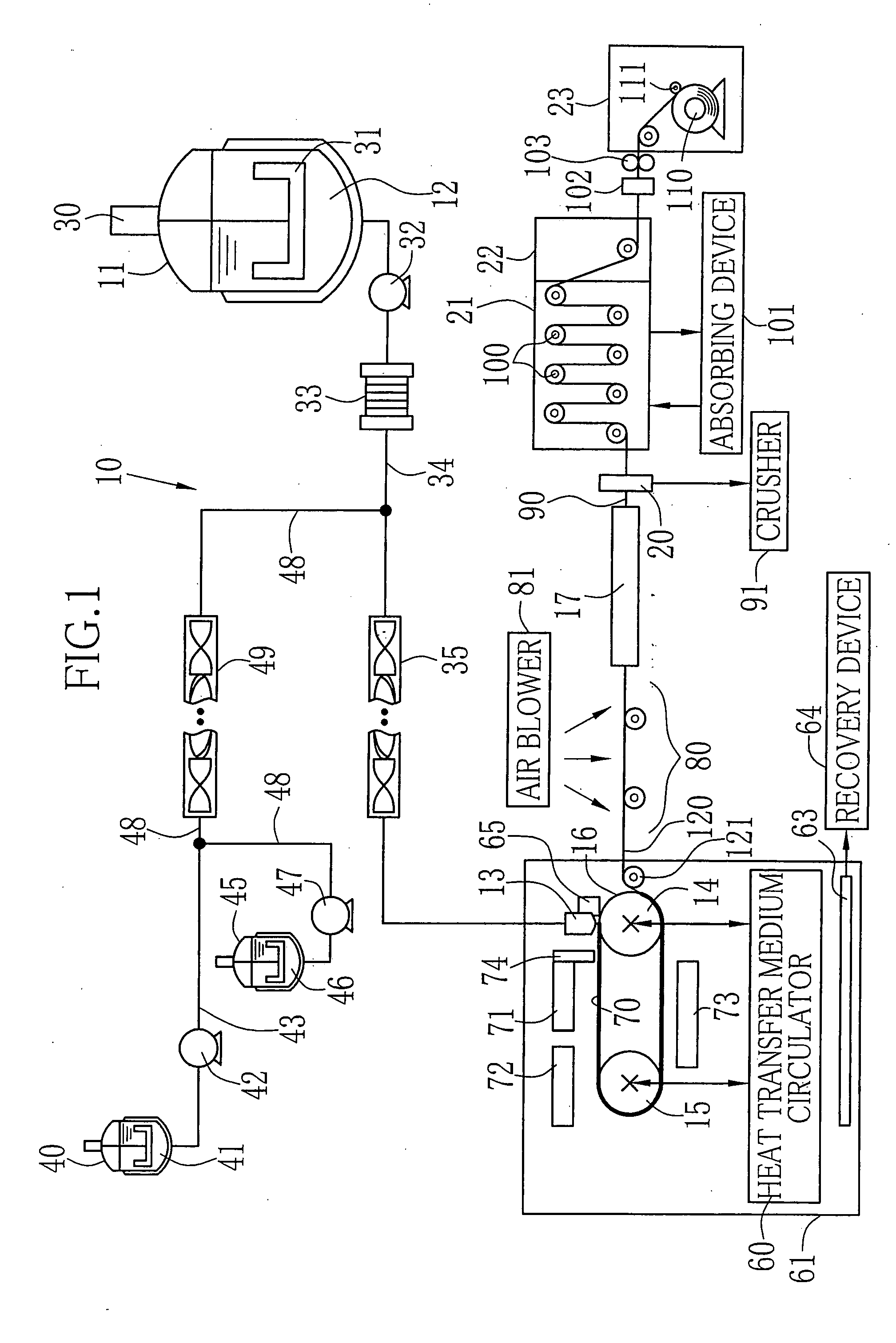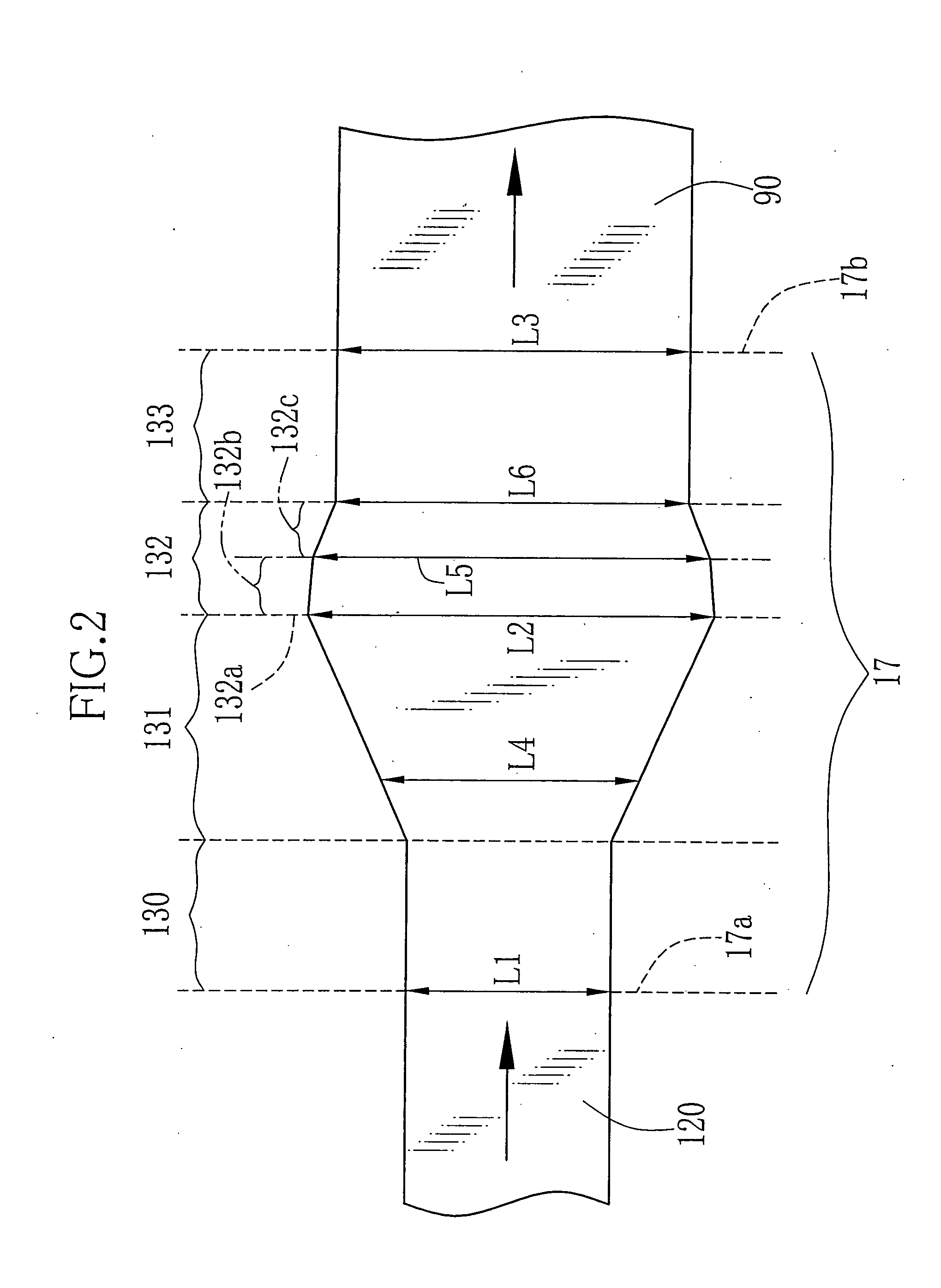Solution Casting Method
a casting method and solution technology, applied in the direction of polarising elements, instruments, manufacturing tools, etc., can solve the problems of difficult to distinctly orient molecules in either longitudinal direction or widthwise direction, difficult to control the bowing of the film, and the film bowing can be reduced more effectively, and the effect of excellent planarity
- Summary
- Abstract
- Description
- Claims
- Application Information
AI Technical Summary
Benefits of technology
Problems solved by technology
Method used
Image
Examples
example
[0100]Hereinafter, an example of the present invention is explained. However, the present invention is not limited to the example. In this example, Experiments 1 to 6 were performed. The explanation of Experiment 1 of the present invention is made in detail, and the same explanations of Experiments 2 to 6 of the preset invention and Comparative Experiments 7 to 9 are omitted. Moreover, the conditions and the results of the experiments are shown in Table 1.
[0101]Compositions of the dope used for producing the film are described below.
[0102]{Experiment 1}
[Preparation of Dope]
[0103]Formulation of the compounds used for preparing the dope 12 is listed below.
Cellulose triacetate89.3wt. %(degree of substitution, 2.8)Plasticizer A (triphenylphosphate)7.1wt. %Plasticizer B (biphenyldiphenylphosphate)3.6wt. %
These solid materials (solute) were added to a mixed solvent of following compounds:
Dichloromethane92wt. %Methanol8wt. %
The mixture of the solid materials and the mixed solvent was stirr...
PUM
| Property | Measurement | Unit |
|---|---|---|
| Fraction | aaaaa | aaaaa |
| Fraction | aaaaa | aaaaa |
| Fraction | aaaaa | aaaaa |
Abstract
Description
Claims
Application Information
 Login to View More
Login to View More - R&D
- Intellectual Property
- Life Sciences
- Materials
- Tech Scout
- Unparalleled Data Quality
- Higher Quality Content
- 60% Fewer Hallucinations
Browse by: Latest US Patents, China's latest patents, Technical Efficacy Thesaurus, Application Domain, Technology Topic, Popular Technical Reports.
© 2025 PatSnap. All rights reserved.Legal|Privacy policy|Modern Slavery Act Transparency Statement|Sitemap|About US| Contact US: help@patsnap.com



